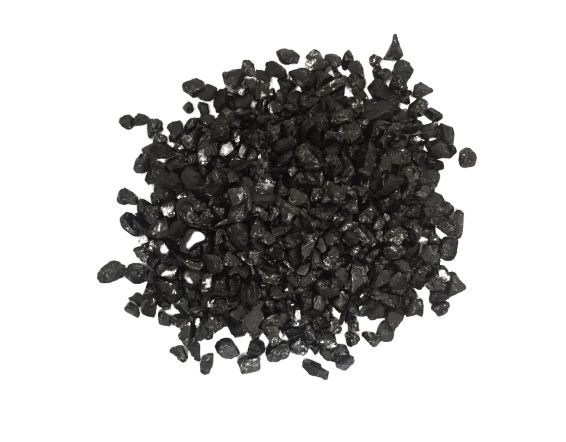Anthracite
 Anthracite is a high-hardness mineral coal of great carbon content. It is formed, like all mineral coals, by a slow process (millions of years) of plant transformation by effect of pressure and temperature. It is the last one on the scale of the Cobonus, and the one that more temperature and pressure needs to form. It is black and shiny, the most dense and hard of the carbons, with a high carbon content (more than 95%).
Anthracite is a high-hardness mineral coal of great carbon content. It is formed, like all mineral coals, by a slow process (millions of years) of plant transformation by effect of pressure and temperature. It is the last one on the scale of the Cobonus, and the one that more temperature and pressure needs to form. It is black and shiny, the most dense and hard of the carbons, with a high carbon content (more than 95%).
Anthracite is an excellent filter media for water clarification in drinking or industrial use, when used in combination with filtering sands. It is one of the most used filtering media. It is a good complement for the mixed filters, in company of sand or green manganese sand. Due to the special shape of its grains, it allows the suspended particles to be retained in the depth of the filtering bed. Compared to a sand filter, this filtering medium allows a higher flow, less pressure drop and a better and faster backwash.
Anthracite filter materials are specifically selected from deep mines with the highest percentage of carbon.
- Particle size: 0.8-1.2 mm; 1.2 - 2.4 mm and other sizes
- Bulk density: 700-800 kg / m3 (depending on size)
- Porosity: greater than 50%
- Basic chemical composition: carbon 92%
- Black, dry, angular granular form.


